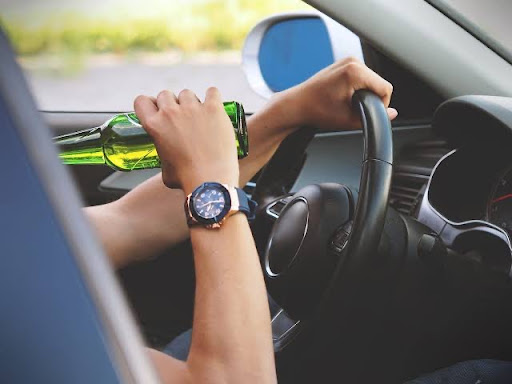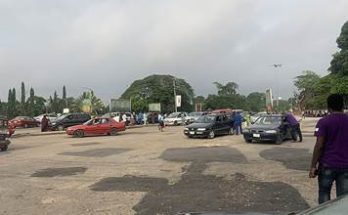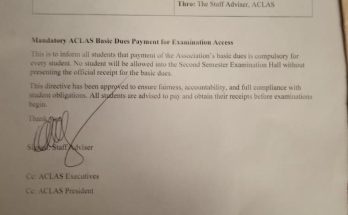By: Odo Christian Obinna
Some of us have had the chance to watch some Fast and Furious movie series. You will concur with this writer that the sensation resulting from seeing such a scene is typically out of this world, characterized by a mixture of sweet and tense sensations being rolled into a ball and disappearing into a parallel reality. You may occasionally notice yourself tense up or covering your mouth with a handful of popcorn. But in all honesty, it is never done intentionally; instead, it is always a reflex response to succeeding emotions. When one of your favorite racers—say, lets Brian O’Conner—puts himself in one of his customary dangerous situations, you could find yourself trying to hide your anxieties behind a bowl of popcorn hastily shoved against your mouth. Or when you struggle to wrap your drifting head around the amazing stunts or the almost impossible overtake that Dominic Torretto just accomplished, all the while stifling a gasp behind your real-time buddy, popcorn, with your eyes and mouth wide open in a silent ‘O’.
Out of Frame
When automobiles race furiously in movies, it might be exciting and a combination of emotions, but when it happens in real life, in a typical packed setting like a campus community, there can only be one thing for sure: danger and calamity waiting to happen. At this point, you must adopt a reality check and establish the necessary distinction between cinematic trickery and cold, hard fact.
Ibadan’s car drivers are among the most daring, especially the infamous Maruwa. These are daredevil drivers who would gleefully tell you that you were walking on the pedestrian side of the road at your own risk and that their cars did not have working breaks. These are also the daredevil drivers that, when they see you trying to maneuver around a road, would rather shift into high gear. We are aware of the background in which drivers normally operate in this “busy” metropolis, but when the same reckless driving and mischief-making enter a university community, a purported refuge of sanity, it is done and will undoubtedly be viewed in a terribly unfavorable light.
The Pattern
Although a university community is intended to reflect sanity and orderliness, we worry that reality is occasionally not cordial enough to concur with us. And this brings to mind the University of Ibadan community’s developing tendency of road rashness and rascality among motorists. Although to some students like Juliet, such road rascality is not a regular occurrence; she agreed that it is occasionally witnessed in front of our very eyes. As she put it, ” I believe it’s a rising trend. And should be checked ASAP.”
Another student, who only went by the name Sunday, claimed that reckless driving and overspeeding on the school’s roads happen frequently. He could swear that not a single day went by without him having some sort of experience or encounter. His observations are in line with those of a trio of friends this reporter encountered while attempting to take a taxi from the faculty of social sciences to the school’s main gate. They all had a different story to tell, but they all came back to the same thing: they had noticed road rascality in the UI community on a regular basis.
But to another student, Lilian, she appeared to live in a whole separate universe. She acknowledged that there might be instances of speeding, but she has never personally seen one in the school. Her discovery might, however, be an isolated incident, which undoubtedly draws our attention to another aspect of this problem: overspeeding might occasionally be relative, depending on the observer’s background. At home, Lillian’s father, a transporter who travels a long distance quickly, is infamous for driving too fast. Students in Lilian’s position might therefore view or define overspeeding very differently as a result of their regular exposure to it at home.
Whichever the case, more and more car users in the UI community are engaging in road rascal behavior. Although opinions may differ on how prevalent they are, it is generally agreed that they are occasionally observed and are growing, which means that if they are not checked as soon as possible, they may come to be considered a normal part of life in this academic atmosphere.
The Culprits
On Friday, this reporter boarded at least seven different cabs on separate school routes. The sixth taxi he took from Awo to the school’s main gate was when he made the most notable observation. A young man driving a black Lexus had to execute a clumsy overtake at the roundabout near the Department of Fisheries because he was probably not prepared to reduce the momentum of his car’s speed. The cab driver bemoaned their road experiences with youthful automobile owners as he battled to match on the break. He claimed that young automobile owners or students, whom he dubbed “Yahoo students,” are to blame for nine out of ten incidents of reckless driving in the school.
Even though the identity of these offenders is up for debate, Sunday and Juliet both agreed that the culprits are recruited from the young demographic of car users. Juliet observed that cab drivers have a speed limit. In addition, because their livelihood depends on driving, they view it as a serious profession. Since their businesses are their primary source of income, they wouldn’t want to attract attention from the authorities to themselves or draw the eyes of their sponsoring institutions or individuals. Most other motorists are academics with a certain amount of sober awareness of appropriate driving behavior.
Further, Juliet believed that these young automobile owners’ road rascality is being driven by a desire to impress. Mostly their close friends, girlfriends, and any other students who care to notice them. Sunday concurred with Juliet regarding the cause of this road rascality but added oppression to the motivation grid. According to Sunday, these young automobile owners, who are mostly students, want to oppress others just as much as they want to be seen. It’s difficult to own a car as a student in our oppressive economy, and it doesn’t really matter how those automobiles got there as long as they’re used to oppress others and gain much-needed attention.
But a more concerning discovery is that, occasionally, they may not even be cognisant enough of risks associated with this type of road rascality since they are sometimes under the influence of alcohol or its christened moniker “highness.” In Nigeria, drunk driving is nothing new. In fact, drunk driving is a significant contributor to traffic accidents in Nigeria, in addition to irresponsible driving. And young people are always the main offenders in this, with their youthful zealotry and exuberance serving as their executioners. This youthful exuberance often makes a loud statement in partying and hard partying. Unfortunately, this widespread trend is not a respecter of the campus community. Even the devil would hold his breath at the number of road illusions these proud, young vehicle owners’ inebriated imaginations could conjure after a night of heavy drinking and partying followed by a drive. And to make matters worse, so many younger Dominic Torrettos are being born on our roadways, racing for only God knows what reward.
The Making of Dom Torretto on Our Roadways
There are particular routes in the school that are more exposed than others, even if every road is a potential suspect. These routes have repeatedly shown themselves as potential trouble spots, and we have taken “judicial notice” of them. The reason is that the roads have a trait in that the renowned movie character Dominic Torretto may be easily recreated there, but this time to the terrified, coldly amused amusement of passersby. Despite how dangerous Awo-Idia road is, it’s not difficult to witness motorists driving recklessly and at breakneck speeds, which led one worried student to refer to the route as an accident waiting to happen. In fact, a fatal accident had happened on this particular road before, reportedly around 2017.
The road connecting the faculty of science to the faculties of social sciences and law and the road directly leading to the school’s main gate were all mentioned by another student who only went by the name Salamah as the breeding grounds for these Dom Torretto wannabes. In addition to his earlier observations made on most of the roadways placed along UI’s postgraduate school, this reporter also noticed a pattern of excessive speeding on the route connecting the Department of Fisheries to both Indy and Zik Hall.
A Call for Action
In the previous session, UI recorded at least two accidents involving her students, leading to their untimely demise. Although these accidents happened outside of the school’s boundaries, they are a reflection of what happens when reckless driving on the roads occurs anywhere in our society. And when such mischief is allowed to fester in a place where people predominate, like a university community, it foretells even grimmer implications for the community’s health and the safety of its unsuspecting residents. Due to the rising tide of reckless driving and excessive speeding inside the school, we are requesting intervention from the appropriate authorities. It is important to enforce speed limits properly. The authorized authorities may want to think about mandating that every automobile entering the school has a speed-controlling device installed with an agreed-upon maximum speed set limit in order to establish a speed limit effectively.
A bump system is also required in the interim, particularly on Awo-Idia and Tech roads. If at all possible, bump out the entire length of the road, raising the bumps as high as necessary.
Dean’s Comment
The Dean of Students, Prof Keye Abiona, noted that reckless driving within the university campus is an offense and assured that the FRSC unit in the university would intensify its monitoring of the various roads on campus to ensure strict compliance with traffic rules and safe driving.




